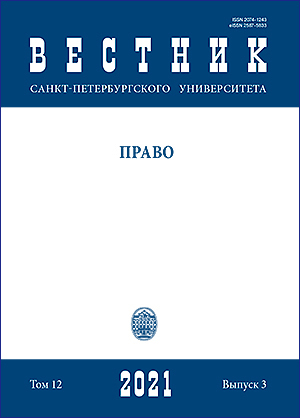Neurotechnologies: Development, practical application and regulation
DOI:
https://doi.org/10.21638/spbu14.2021.302Abstract
Neurotechnology is one of the groups of technologies called disruptive or cross-cutting digital technologies. The spread of these technologies in many sectors of the economy can radically change human society. The state contributes to the development of technology when it implements strategic development programs and creates special legislation. The lack of regulation is an obstacle to the development and dissemination of this technology in practice. Therefore, the regulation of artificial intelligence technologies is actively created in the modern world. The law practically does not regulate other cross-cutting technologies, including neurotechnologies. The uncertainty of the further development of technologies and the impossibility of accurate forecasting of development explain the lack of regulation. At the same time, neurotechnologies are increasingly used in practice (neural implants, neural interfaces). According to experts, the pace of development of neurotechnologies in the next decade will lead to an explosive increase in their distribution in society. The subject of research in this article is the study of the need for the creation of special regulation. The objectives of the study include the analysis of risks associated with the development of neurotechnologies and the substantiation of opportunities to eliminate risks through legal regulation. Methods of system analysis, abstraction, legal modelling, the formal-logical method and the comparativelegal method are used in this study. The result of the work includes a greater likelihood of the future integration of the human body and artificial intelligence into a single system due to the development of neurotechnologies, which will require a rethinking of some personal and socio-economic human rights.
Keywords:
neuroprosthetics, neural interface, neurochip, artificial intelligence, cyborgization, legal status, human rights
Downloads
References
Downloads
Published
How to Cite
Issue
Section
License
Articles of "Vestnik of Saint Petersburg University. Law" are open access distributed under the terms of the License Agreement with Saint Petersburg State University, which permits to the authors unrestricted distribution and self-archiving free of charge.






